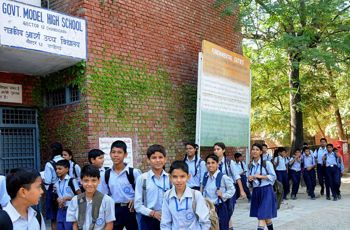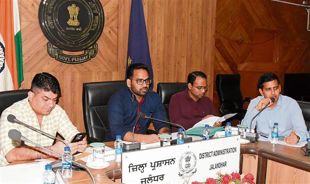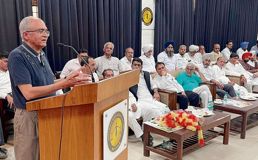
NASA Administrator Jim Bridenstine said about 60 pieces had been tracked so far of which 24 were going above the apogee of the ISS.
Washington, April 2
India shooting down one of its own satellites was a “terrible thing” as it created about 400 pieces of orbital debris, the chief of NASA has said, warning that the risk of debris colliding with the International Space Station (ISS) has risen by 44 per cent since the weapon test.
Prime Minister Narendra Modi announced on March 27 that India has achieved a “historic feat” by shooting down its own low-orbit satellite with a ground-to-space missile. Only the US, Russia and China have anti-satellite missile (ASAT) capabilities.
National Aeronautics and Space Administration Administrator Jim Bridenstine said about 60 pieces of debris have been tracked so far, of which 24 are going above the apogee of ISS, the point of the space station’s orbit farthest from the Earth.
“That is a terrible, terrible thing to create an event that sends debris and an apogee that goes above the space station. That kind of activity is not compatible with the future of human spaceflight that we need to see,” he said.
Bridenstine said not all of the pieces were big enough to track and NASA is right now tracking objects 10 cm or bigger. The risk from small debris as a result of the ASAT test to ISS went up 44 per cent over 10 days. “So, the good thing is it’s low enough that over time this will all dissipate,” he told his NASA colleagues.
Soon after the ASAT test, India said it was done in the lower atmosphere to ensure that there is no space debris.
“Whatever debris that is generated will decay and fall back onto the earth within weeks.” By conducting the test, the Ministry of External Affairs said, India was not in violation of any international law or treaty.
Interestingly, Bridenstine is the first top official from the Trump administration to come out in public against India’s ASAT test. A day after India successfully carried out its test, acting US defence secretary Patrick Shanahan warned that the event could create a “mess” in space but said Washington was still studying the impact.
Bridenstine said NASA is “learning more and more every hour” that goes by about this orbital debris field that has been created from the anti-satellite test.
“We are charged with commercialising of low earth orbit. We are charged with enabling more activities in space than we’ve ever seen before for the purpose of benefiting the human condition,” he said.
“All of those are placed at risk when these kinds of events happen,” Bridenstine said as he feared India’s ASAT test could risk proliferation of such activities by other countries.
He said a lot of debris from the 2007 direct ascent anti-satellite test by China is still in space. — PTI



























